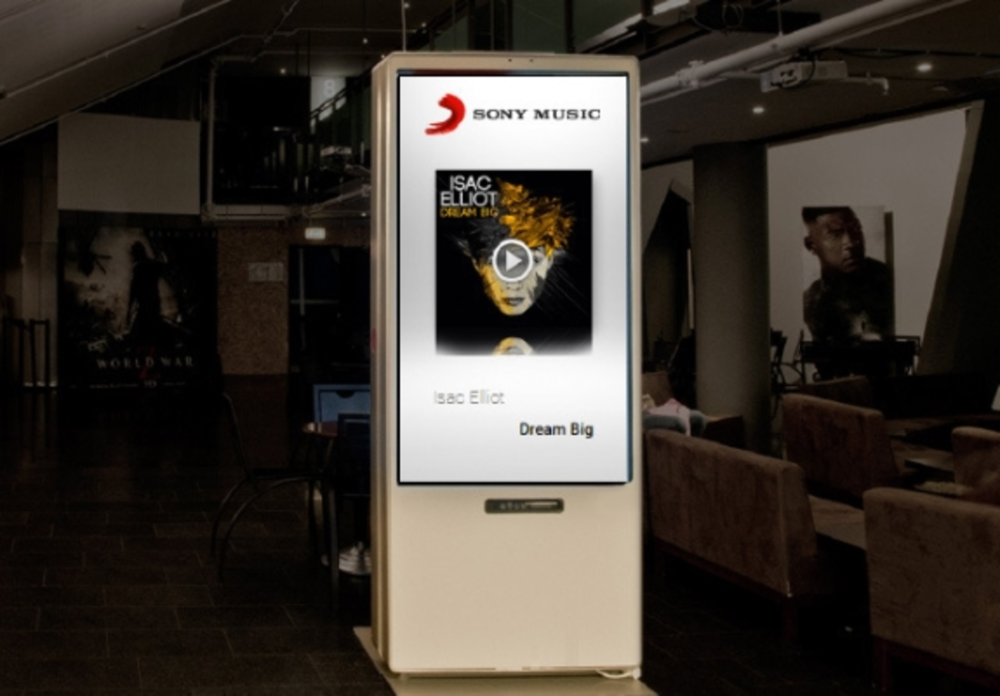Outdoor advertising is one of the oldest forms of marketing around, and its effectiveness can be assumed based on its longevity. In terms of hard data, though, marketers can’t do much to measure beyond estimating the potential reach of an outdoor ad. Given technology’s influence on the rest of marketing, that may be changing. “Outdoor advertising has been the same for many years. It’s an industry in need of a bit of disruption,” says Martin Larsen, CMO at digital advertising software company Adform.
In fact, when Sony Music Entertainment worked with Adform, and interactive digital marketing provider fluxLoop, it aimed to disrupt.
Opportunity
“[We] were approached by fluxLoop, who works with Adform, about an outdoor campaign,” says Erik Eken, marketing director at Sony Music Entertainment Norway. FluxLoop had been working on interactive screens with the goal of bringing digital marketing advantages such as analytics, data, and rich media integration to outdoor marketing. “We liked the idea of combining outdoor with digital and wanted to promote four of our very strong artist brands through this,” he says.
The potential gains were twofold. By experimenting with new technology, Sony could position itself as an innovator in the outdoor advertising space, to say nothing of the novelty of such a campaign from the consumers’ perspective. Additionally, Sony could market its artists’ music through a channel that properly supports and serves the content. Furthermore, the entertainment company could launch the campaign with relatively little risk. “There were no major challenges [with this campaign] because smartphone penetration in our market is very high,” Eken says. Indeed, the screens, which fluxLoop calls fluxBoxes, are nearly as interactive as a mobile phone.
Execution
Sony chose to run these fluxBox campaigns with the works from four of its artists: Isac Elliot, Justin Timberlake, Miley Cyrus, and One Direction. According to Eken, these artists were ideal for the campaign because of their overlapping audience segments.
With creative material (i.e. music videos) in place, Adform and fluxLoop set about optimizing the campaign. “We came up with a concept for the campaign around dynamic ads,” Adform’s Larsen explains. “We wanted to take outdoor ads and update the content of those ads according to consumer behavior and demographics.” FluxBox collected audience and viewing data from the music videos Sony supplied. Adform fused this data into the production of the campaign.
By striking a deal with Norwegian cinema advertising distributor CAPA Cinema Advertising, the three companies were able to place 16 fluxBoxs in theaters throughout Norway. When fans interacted with a screen they could cycle through the four artists and play music videos. Fans could click one of three social media buttons, input their phone number, and receive a download link or view the video from their device. “The whole idea was that the consumers would be directed to YouTube or received a link to their preferred streaming provider to consume music from their favorite artist,” Sony’s Eken explains. Then Sony was able to track exactly who was interacting with its content and for how long.
Results
About 1,138,000 people had the opportunity to interact with the fluxBoxes and the campaign. Of those, every fifth person saw the campaign (21%). Ten percent of users spent more than 10 seconds viewing the videos, with the average person viewing videos about four times. People between 15 and 30 years old engaged with the campaign the longest. Women spent 10% more time with the creative than men, though 57% of all viewers were male.
In addition to the wealth of SMS communication opt-ins, 31.3% of those who interacted with the campaign converted. “We felt the conversion rate [was] pretty impressive,” Eken says.








